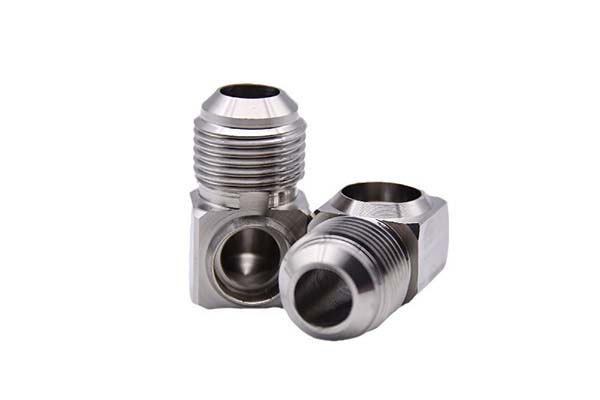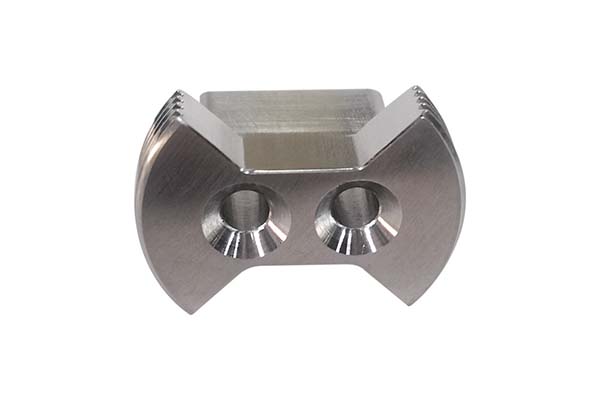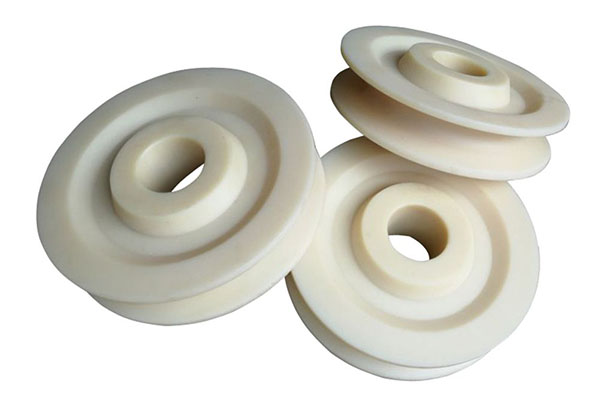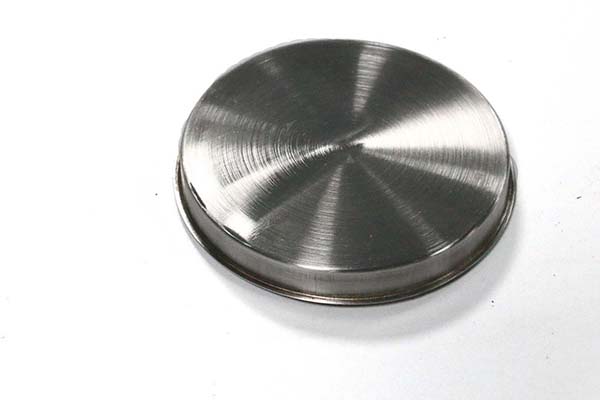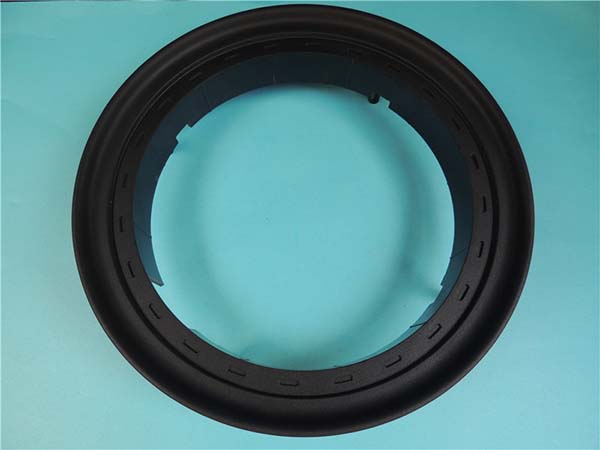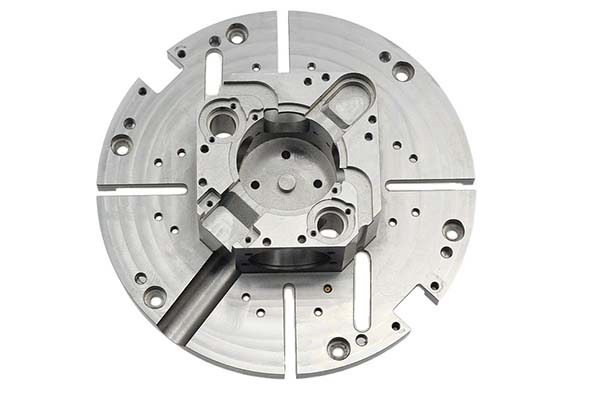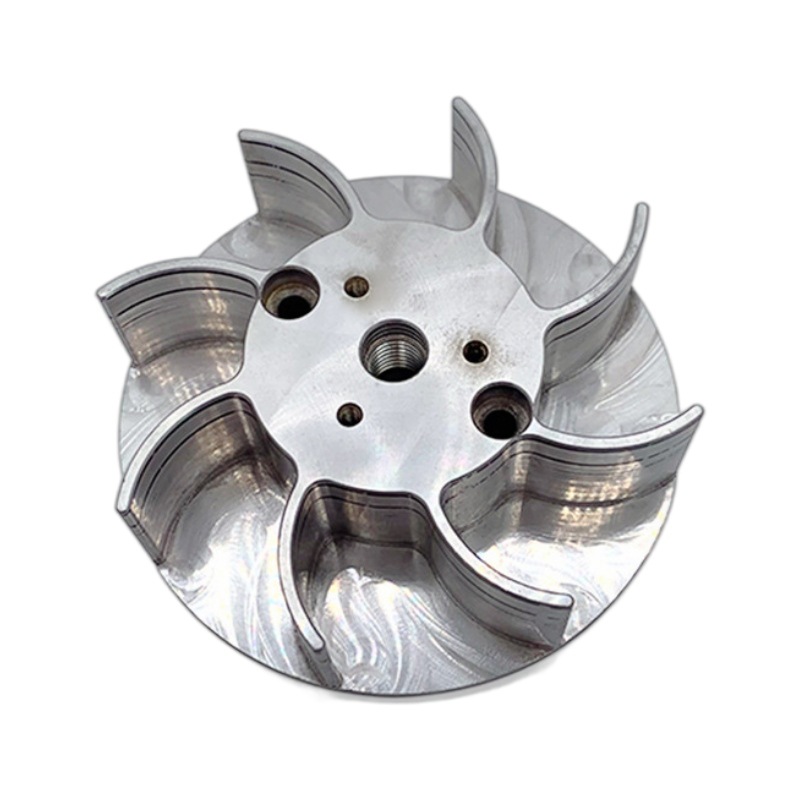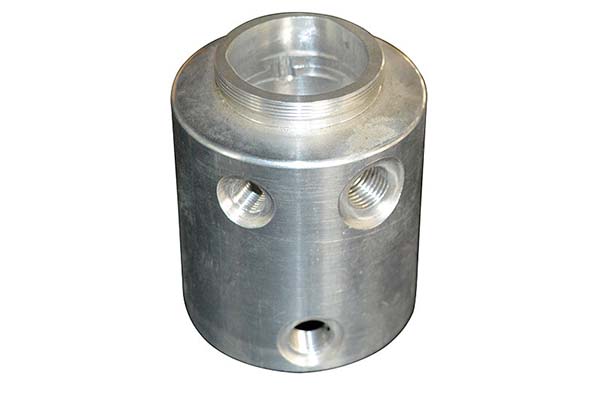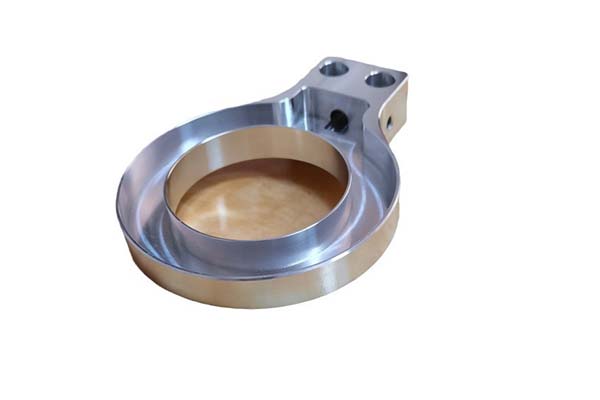In the complex world of manufacturing, choosing the right machining method is crucial. It can impact everything from the quality and accuracy of your products to the overall cost and production time. But with a vast array of machining methods available, how do you make the best choice? This article will delve into the various machining methods, their associated parameters, equipment, and applications, helping you solve the puzzle of machining method selection.
Traditional Machining Methods: The Foundation of Manufacturing
Traditional machining methods have been the backbone of the manufacturing industry for decades. These methods involve the use of cutting tools to remove material from a workpiece, shaping it into the desired form.
Cutting: The Core of Traditional Machining
Cutting is a broad category that encompasses several sub - methods. Turning is a process where the workpiece is rotated while a cutting tool removes material to create cylindrical shapes. For example, in the production of engine shafts, turning is commonly used. The cutting speed in turning can range from 50 to 500 meters per minute, depending on the material being processed. A feed rate of 0.1 - 0.5 mm per revolution is typical, and the depth of cut can vary from 0.5 to 5 mm.
Milling is another important cutting method. Here, a rotating cutting tool with multiple teeth is used to remove material from the workpiece. It can create complex shapes, such as slots, pockets, and contours. In milling, cutting speeds can be as high as 1000 meters per minute for some materials, with feed rates ranging from 0.05 to 0.5 mm per tooth. The depth of cut in milling is usually between 0.1 and 5 mm.
Drilling is used to create holes in workpieces. Drill presses are the primary equipment for drilling. The cutting speed for drilling steel is typically around 20 - 30 meters per minute, with a feed rate of 0.1 - 0.3 mm per revolution.
Grinding is a finishing process that uses an abrasive wheel to remove a small amount of material, resulting in a smooth surface finish. It is often used for parts that require high precision and a fine surface finish, like bearing surfaces. The grinding wheel speed can reach up to 30 - 60 m/s.
Broaching, shaping, planing, and sawing are also traditional cutting methods, each with its own unique applications. Broaching is used to create internal or external shapes with high precision, shaping and planing are used for flat surfaces, and sawing is for cutting materials into desired lengths or shapes.
Advanced Machining Methods: Pushing the Boundaries
As technology has advanced, so have machining methods. Advanced machining methods offer solutions for materials and geometries that are difficult or impossible to achieve with traditional methods.
Laser Cutting: Precision and Speed
Laser cutting uses a high - power laser beam to melt, burn, or vaporize material. It is highly precise, with a cutting tolerance of up to ±0.05 mm. Laser cutting can process a wide range of materials, including metals, plastics, and ceramics. For example, in the electronics industry, laser cutting is used to create intricate patterns on circuit boards. The cutting speed in laser cutting can vary widely, from a few millimeters per second for thick materials to several meters per minute for thin materials.
Electrochemical Machining (ECM): Non - Traditional Material Removal
ECM is a process that uses an electrochemical reaction to remove material from the workpiece. It is particularly useful for machining hard and brittle materials. In ECM, the tool (cathode) and the workpiece (anode) are placed in an electrolyte solution. By applying an electric current, metal ions are dissolved from the workpiece. ECM can achieve a high level of precision, with a tolerance of up to ±0.02 mm.
Electron Beam Machining (EBM) and Ultrasonic Machining (USM)
EBM uses a high - energy electron beam to melt and vaporize material. It is often used in the aerospace industry for machining superalloys and for creating micro - features. USM, on the other hand, uses high - frequency vibrations of an abrasive tool to remove material. It is suitable for machining hard and brittle materials, such as glass and ceramics.
Abrasive Water Jet Machining and Wire Electrical Discharge Machining (WEDM)
Abrasive water jet machining combines a high - pressure water jet with abrasive particles to cut materials. It can cut a variety of materials without generating heat - affected zones. WEDM uses an electrical discharge between a wire electrode and the workpiece to erode material. It is commonly used for making dies and molds, with a precision of up to ±0.005 mm.
Additive Manufacturing (3D Printing): Building Layer by Layer
Additive manufacturing, or 3D printing, is revolutionizing the manufacturing industry. Instead of removing material, it builds objects layer by layer from a digital model. It allows for the creation of complex geometries that are difficult to achieve with traditional methods. There are various types of 3D printing technologies, such as fused deposition modeling (FDM), stereolithography (SLA), and selective laser sintering (SLS). FDM is often used for prototyping and low - volume production, while SLA and SLS can produce high - quality parts with fine details.
Machining Process Parameters: The Key to Success
The success of any machining operation depends on the proper selection of process parameters.
Cutting Speed, Feed Rate, and Depth of Cut
Cutting speed is the relative speed between the cutting tool and the workpiece. A higher cutting speed can increase the material removal rate but may also lead to increased tool wear. The feed rate is the rate at which the tool advances into the workpiece, and the depth of cut is the thickness of material removed in a single pass. For example, in turning a steel workpiece, if the cutting speed is too high, the tool may overheat and wear out quickly. A proper balance between these parameters is essential.
Tool Geometry and Its Impact
Tool geometry, such as the rake angle, clearance angle, and cutting edge radius, affects the cutting forces, chip formation, and surface finish. A well - designed tool geometry can reduce cutting forces, improve chip evacuation, and enhance the surface finish of the workpiece.
Cutting Force, Temperature, and Tool Wear
Cutting force is generated during the machining process and can affect the accuracy of the workpiece. High cutting forces can cause deflection in the workpiece and tool, leading to dimensional inaccuracies. Cutting temperature can also impact tool life and the quality of the workpiece. Tool wear is a natural consequence of machining, and monitoring and managing it is crucial. There are different types of tool wear, such as flank wear, crater wear, and nose wear. By choosing the right cutting parameters and tool materials, tool wear can be minimized.
Surface Finish and Material Removal Rate
Surface finish is an important aspect of machining, especially for parts that require tight tolerances and a smooth surface. The material removal rate is the amount of material removed per unit time. Optimizing the machining process parameters can improve both the surface finish and the material removal rate. For example, a lower feed rate and a higher cutting speed can result in a better surface finish, but it may reduce the material removal rate.
Machining Equipment and Tools: The Workhorses of Manufacturing
The right machining equipment and tools are essential for achieving the desired results.
Lathes, Milling Machines, and Drill Presses
Lathes are used for turning operations, milling machines for milling, and drill presses for drilling. These machines come in various sizes and capabilities. A basic lathe may have a maximum turning diameter of 200 - 500 mm, while larger industrial lathes can handle diameters of over 1 meter. Milling machines can have different axis configurations, such as 3 - axis, 4 - axis, and 5 - axis, with 5 - axis machines offering the ability to machine complex geometries in a single setup.
CNC Machine Tools: Precision and Automation
Computer Numerical Control (CNC) machine tools have revolutionized the manufacturing industry. They are programmed to perform machining operations with high precision. CNC machines can repeat the same operation with a high degree of accuracy, reducing human error. For example, a CNC milling machine can machine a part with a dimensional accuracy of ±0.01 mm.
Cutting Tools and Tool Holders
Cutting tools, such as end mills, drills, and reamers, are available in different materials, including high - speed steel, carbide, and diamond - coated tools. Carbide tools are widely used due to their high hardness and wear resistance. Tool holders are used to hold the cutting tools securely in the machine. There are different types of tool holders, such as collet chucks, milling arbors, and drill chucks.
Coolant Systems and Fixtures
Coolant systems are used to cool the cutting tool and the workpiece, reducing heat - related problems such as tool wear and workpiece distortion. Fixtures and clamps are used to hold the workpiece in place during machining, ensuring accurate positioning and stability.
Measurement Tools: Ensuring Quality
Measurement tools, such as micrometers, calipers, and coordinate measuring machines (CMMs), are used to measure the dimensions of the workpiece. Micrometers can measure with an accuracy of up to 0.001 mm, while CMMs can achieve even higher accuracies, making them essential for quality control in machining.
Machining Quality and Accuracy: Meeting the Standards
Maintaining high machining quality and accuracy is crucial for producing reliable products.
Dimensional Accuracy and Tolerance
Dimensional accuracy refers to how close the actual dimensions of the workpiece are to the desired dimensions. Tolerance is the acceptable range of variation from the nominal dimension. For example, in the aerospace industry, parts may have a tolerance of ±0.005 mm. Achieving such tight tolerances requires precise machining equipment, proper process parameters, and skilled operators.
Surface Roughness and Geometric Tolerances
Surface roughness affects the performance of parts, especially those that require a smooth surface for proper functioning, such as bearings. Geometric tolerances, including roundness, flatness, straightness, perpendicularity, and parallelism, ensure that the shape and orientation of the part meet the design requirements. Inspection methods, such as visual inspection, tactile inspection, and non - destructive testing, are used to check for surface roughness and geometric tolerances.
Quality Control in Machining
Quality control in machining involves monitoring the machining process at various stages. This includes inspecting the raw materials, checking the machine settings before starting the operation, and performing in - process and final inspections of the workpiece. By implementing a comprehensive quality control system, manufacturers can reduce the number of defective parts and improve overall productivity.
Machining Applications: Diverse and Essential
Machining methods find applications in a wide range of industries.
Automotive Industry
In the automotive industry, machining is used to produce engine components, transmission parts, and chassis components. For example, engine blocks are machined to precise tolerances to ensure proper fit and function of the engine components. Advanced machining methods like ECM and WEDM are used for manufacturing parts with complex geometries, such as turbine blades in turbochargers.
Aerospace Industry
The aerospace industry demands high - precision machining for parts such as aircraft engine components, landing gear parts, and airframe structures. Materials used in aerospace, such as titanium alloys and superalloys, require specialized machining methods. Laser cutting and EBM are often used for machining these materials due to their ability to achieve high precision and work with difficult - to - machine materials.
Electronics Manufacturing
In electronics manufacturing, machining is used for producing printed circuit boards, connectors, and housings. Laser cutting and micromachining techniques are used to create fine features and patterns on circuit boards. Precision machining is crucial to ensure the proper functioning of electronic components.
Medical Device Manufacturing
Medical device manufacturing requires high - precision machining to produce implants, surgical instruments, and diagnostic equipment. Parts need to be biocompatible and meet strict quality standards. Machining methods such as micro - milling and grinding are used to create the intricate shapes and smooth surfaces required for medical devices.
Tool and Die Making, Precision Engineering, Metalworking, Woodworking, and Plastic Machining
Tool and die making involves machining molds and dies used in manufacturing processes. Precision engineering focuses on producing parts with extremely high accuracy. Metalworking, woodworking, and plastic machining use a variety of machining methods to shape these materials into useful products. For example, in plastic machining, methods like milling and drilling are used to create plastic parts for consumer products and industrial applications.
Yigu Technology, as a plastic metal parts custom manufacturing supplier, believes that choosing the right machining method is a balance between the complexity of the part, the required accuracy, the material being processed, and the production volume. For plastic parts, traditional machining methods like milling and drilling are often sufficient for simple geometries, while advanced methods such as laser cutting can be used for more intricate designs. However, cost - effectiveness also plays a crucial role. By leveraging our expertise and experience, we can help clients make the best decisions regarding machining methods to ensure high - quality, cost - efficient production.
FAQ
- How do I choose between traditional and advanced machining methods?
- Consider the material of the workpiece, the complexity of the shape, the required precision, and the production volume. For simple shapes and large production volumes, traditional methods may be more cost - effective. For complex geometries or difficult - to - machine materials, advanced methods are often a better choice.
- What are the most common causes of poor surface finish in machining?
- Incorrect cutting parameters (such as too high a feed rate or cutting speed), tool wear, improper coolant use, and vibrations in the machine or workpiece can all lead to a poor surface finish.
- Can 3D printing replace traditional machining methods completely?
- No, 3D printing has its own advantages, such as the ability to create complex geometries and for rapid prototyping. However, traditional machining methods are still better suited for high - volume production, certain materials, and achieving very tight tolerances. Each method has its place in the manufacturing landscape.
